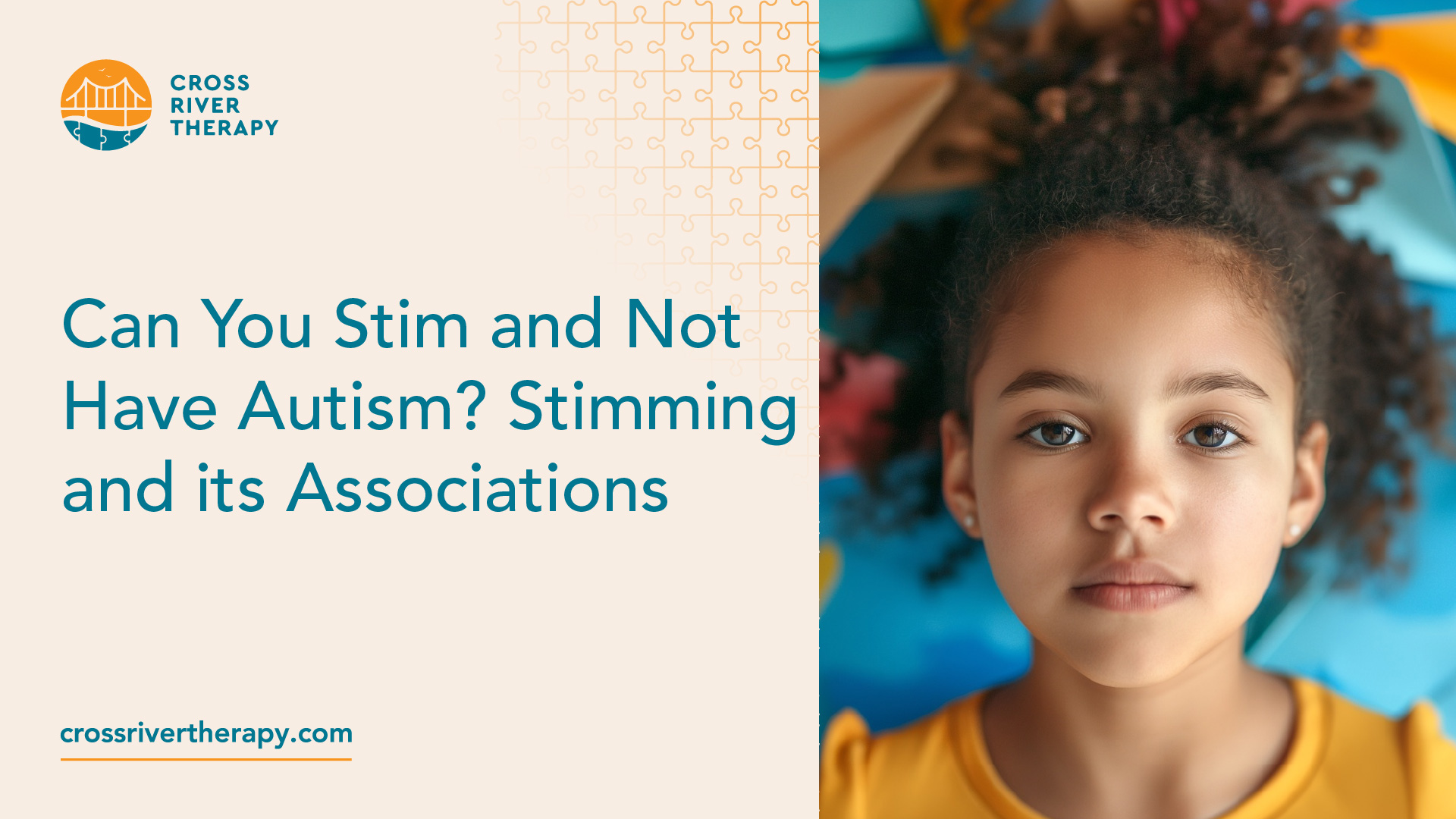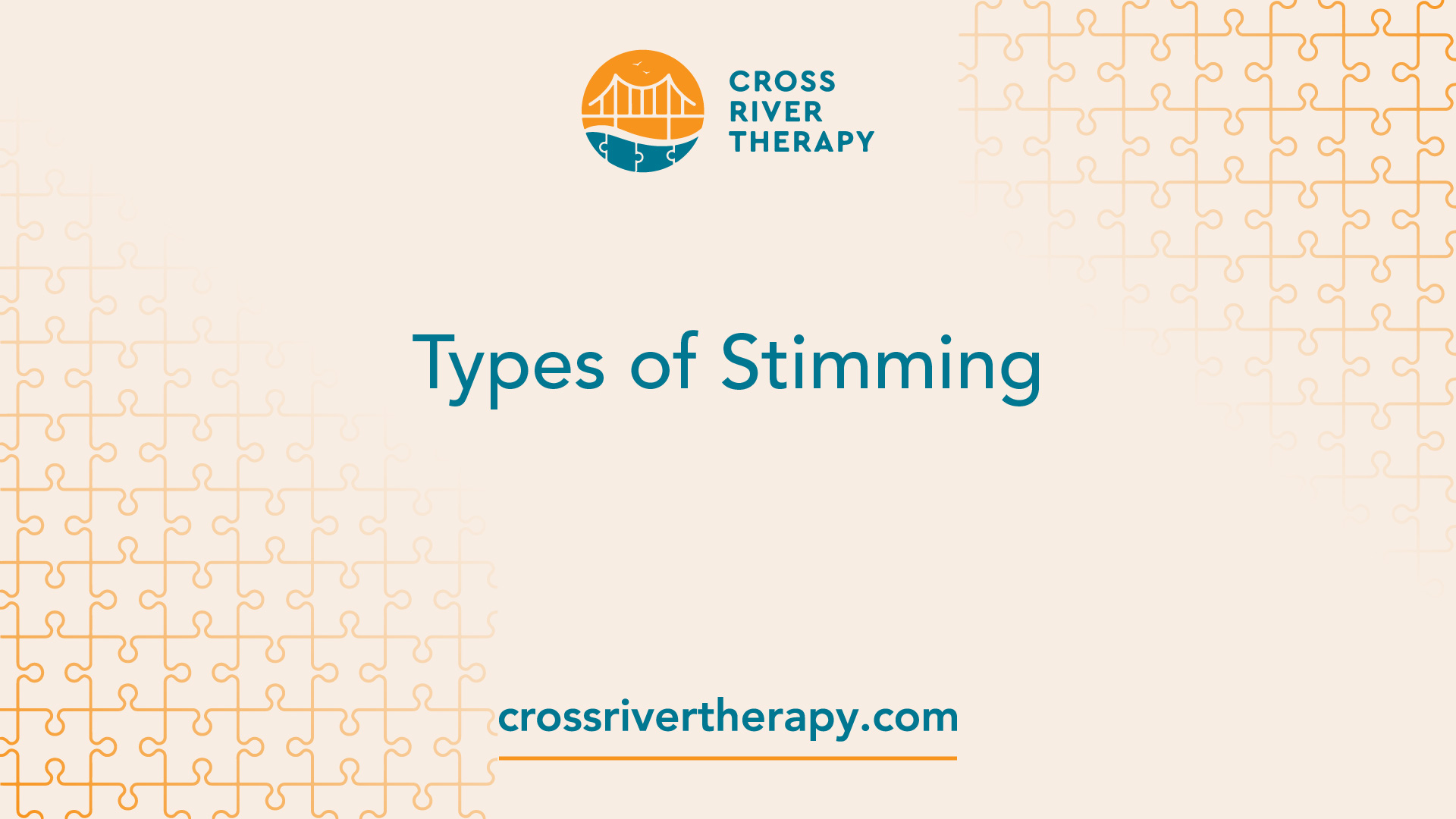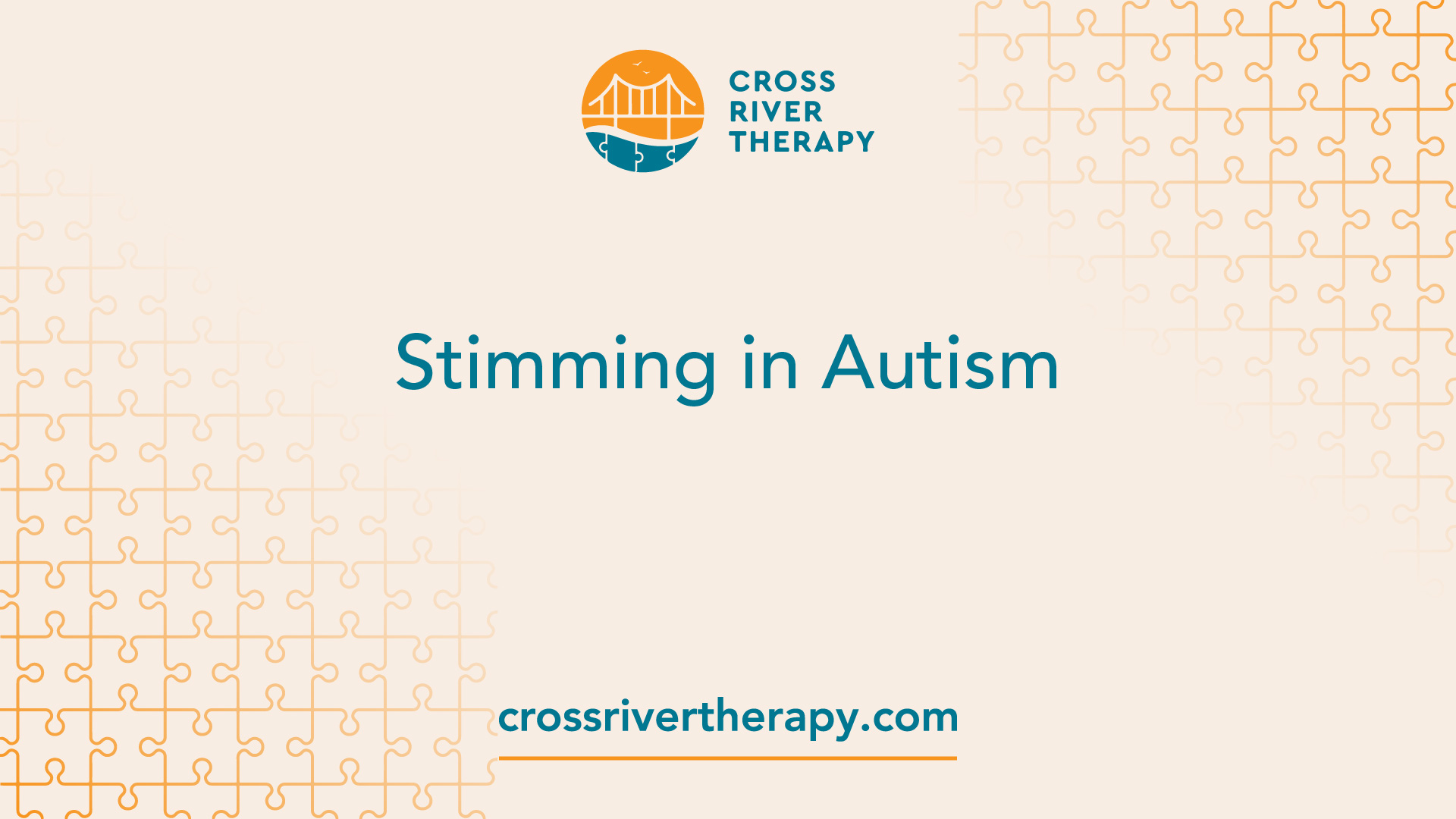Can You Stim and Not Have Autism? Stimming and its Associations
Explore stimming beyond autism - understanding its types, purpose, and the question "Can you stim and not have autism?"
Understanding Stimming Behaviors
As we delve into the world of stimming behaviors, it's essential to understand the definition and purpose of these actions, especially for parents and families of children with autism.

Defining Stimming
The term "stimming" is short for "self-stimulatory behaviors" and is often associated with repetitive actions or sounds. This term is likely derived from the phrase "self-stimming". Stimming behaviors are often associated with autism, but they are not exclusive to this condition. Many people, including those without autism, engage in stimming behaviors as a way to cope with emotions.
Stimming can take many forms, including visual behaviors. For examples of visual stimming behaviors, please see our article on visual stimming examples.
Purpose of Stimming
Stimming serves a valuable purpose for individuals, even if they cannot always verbalize the reason behind the behavior. It can help regulate emotions and may be triggered by environmental factors such as noise, the presence of many people, or engaging in new or difficult tasks.
Moreover, stimming provides an outlet for energy when someone with autism feels a sudden rush of emotions, allowing them to continue functioning within their environment.
Importantly, stimming is not exclusive to individuals with autism. Many neurotypical adults also engage in stimming behaviors. Actions such as foot and finger tapping, playing with hair, or minor vocalization can be considered forms of stimming. Experts theorize that these behaviors provide a valuable form of self-soothing and may block out unwanted environmental stimuli [4].
In summary, stimming is a complex behavior that serves various functions, not just for individuals with autism, but for many people. Understanding the role and purpose of stimming can help families and caregivers support their loved ones more effectively. For more information on the visual aspect of stimming, refer to our article on can stimming be visual?.
Types of Stimming
Stimming behaviors serve the purpose of helping individuals cope with overwhelming situations, too much sensory input, or uncontrolled emotions and thoughts. They can vary widely and may involve different senses and parts of the body, such as hand-flapping, rocking, repeating sounds, or tapping. These behaviors are categorized into auditory, vocal, tactile, visual, vestibular, olfactory, or full-body movements.

Auditory and Vocal Stimming
Auditory and vocal stimming involves the use of sound or voice. This can include behaviors such as repeating certain words or sounds, humming, or clicking noises. These types of stimming can serve as a form of self-soothing for the individual, particularly in situations where they may feel overwhelmed or anxious.
Tactile and Visual Stimming
Tactile stimming involves the sense of touch, such as hand-flapping, tapping, or rubbing certain textures. Visual stimming, on the other hand, involves behaviors that are seen, such as eye-fluttering, looking at spinning objects, or watching light flicker. For more information on this type of stimming, visit our article on visual stimming examples and can stimming be visual?.
Common types of autism stimming include these tactile and visual behaviors, as well as others involving taste and textures, smell, balance or movement, and awareness of body in relation to the environment [5].
Full-Body and Olfactory Stimming
Full-body stimming can include behaviors such as rocking, spinning, or jumping. These behaviors can help regulate emotions or sensory input, particularly for individuals who may struggle with body awareness.
Olfactory stimming involves the sense of smell, with individuals often seeking out certain scents or smelling objects as a form of stimulation. This type of stimming is often seen in individuals with Sensory Processing Disorder (SPD), which can affect the senses of smell, sight, sound, touch, taste, motion, and body awareness.
In understanding these types of stimming, it's crucial to recognize that stimming behaviors can serve important purposes for the individual, helping them manage and process sensory information. Creating a supportive environment that understands and accommodates these behaviors can be beneficial in supporting individuals who stim.
Stimming in Autism
Stimming, an essential aspect of autism, holds significance in understanding the behavior of individuals with Autism Spectrum Disorder (ASD). This section will explore the relationship between stimming and ASD, including its role as a coping mechanism.

Stimming and Autism Spectrum Disorder
Stimming, short for self-stimulatory behaviors, is often associated with autism, although it's not exclusive to individuals with this condition. Clinically referred to as 'self-stimulatory behaviors,' stimming is identified by its repetitive movements and/or vocalizations [3].
People with autism may have more pronounced stimming behaviors due to experiencing senses differently, with heightened sensory experiences. These behaviors can include actions like doing something repeatedly or making the same sound multiple times. Stimming can manifest itself in a variety of ways, including visual stimming, which can be explored further in our article can stimming be visual?.
Stimming as a Coping Mechanism
Stimming serves a purpose in self-regulation and can be a way to feel grounded in the moment and regulate feelings. It can help regulate emotions and be triggered by environmental factors such as noise, the presence of many people, or engaging in new or difficult tasks [3].
For individuals with autism, stimming provides an outlet for energy when they feel a sudden rush of emotions, allowing them to continue functioning within their environment. This makes it an essential coping mechanism for individuals with autism, helping them manage overstimulation or excitement.
While stimming is often associated with ASD, it's crucial to note that this behavior can also be observed in neurotypical individuals and those with other neurodevelopmental conditions. This leads us to the question many often ask: 'can you stim and not have autism?'. The answer is yes - stimming is a natural behavior that can be seen in a variety of contexts, beyond just autism.
Managing Stimming
Stimming, though often associated with autism, is a behavior that many individuals, whether neurotypical or neurodivergent, engage in for various reasons. Understanding and managing stimming behaviors can be crucial, especially in contexts where the individual struggles with overwhelming sensory input or emotions.
Benefits of Stimming
Stimming can serve several purposes and can, in fact, offer some distinct benefits. It often acts as a valuable form of self-soothing and may block out unwanted environmental stimuli. For instance, behaviors like foot and finger tapping, playing with hair, or minor vocalization can be considered stimming.
Moreover, stimming can be a way to feel grounded in the moment and regulate feelings. It provides an outlet for energy when someone with autism feels a sudden rush of emotions, allowing them to continue functioning within their environment. This can improve mental health by providing an outlet for energy and helping individuals process their emotions.
Stimming can also be triggered by environmental factors such as noise, the presence of many people, or engaging in new or difficult tasks. In such cases, stimming behaviors can help regulate emotions and offer a sense of comfort [3].
Risks and Challenges
While stimming can have numerous benefits, there are also risks and challenges associated with this behavior. One of the primary concerns is social acceptance. Stimming behaviors, particularly those that are more noticeable, can draw attention and lead to social isolation or ridicule.
Another significant risk is potential harm from certain types of stimming behaviors. Some individuals may engage in harmful stimming behaviors, such as head banging or scratching, which can lead to physical injuries.
Moreover, excessive reliance on stimming as a coping mechanism may prevent individuals from developing other strategies for managing stress and overwhelming emotions. This dependence could limit their ability to adapt to different situations or environments.
While it's important to respect and understand the purpose of stimming, it's equally crucial to ensure that it doesn't lead to harm or hinder social integration. Hence, the goal should not be to eliminate stimming but to manage it effectively, ensuring that it serves its purpose without leading to negative consequences. For more information on effective strategies for managing stimming, refer to our section on strategies for managing stimming.
Stimming Beyond Autism
Stimming, or self-stimulatory behavior, isn't exclusive to individuals with autism. It can be observed in neurotypical individuals and those with Sensory Processing Disorder (SPD). This section will address the question many have: can you stim and not have autism?
Stimming in Neurotypical Individuals
Even neurotypical individuals—those without a neurological disorder—can exhibit stimming behavior. This can be seen in everyday habits like twirling hair, biting nails, or tapping feet. These behaviors, often unconscious, can serve as a way to manage stress, concentrate, or express emotions.
Stimming in neurotypical individuals typically differs from that in individuals with autism in terms of frequency and intensity. For neurotypical individuals, these behaviors are often temporary and context-dependent, subsiding once the triggering circumstance has passed.
Stimming in Sensory Processing Disorder
In individuals with Sensory Processing Disorder (SPD), stimming behavior is often observed as a mechanism to calm or rev up their nervous system. SPD can affect an individual's sense of smell, sight, sound, touch, taste, motion, and body awareness. The most common type of SPD is Sensory Modulation Disorder, which can lead to behaviors like stimming, rocking, pinching, or biting.
There are two main types of individuals with SPD: sensory seekers and sensory under-responders. Sensory seekers are individuals who crave sensory input and may engage in behaviors like grabbing, running, jumping, touching, and biting. These behaviors help fulfill their sensory needs and reduce cravings for over-stimulation [6].
On the other hand, sensory under-responders have a thick "sponge" that doesn't allow enough stimuli to get through. This leads to challenges in processing sensory information. Creating a multisensory environment can help awaken and stimulate the senses of an under-responsive individual.
While stimming is not entirely harmful, it can sometimes be socially inappropriate and impact self-esteem. Providing the right sensory diet and choices before or when stimming occurs can be beneficial.
Understanding the stimming behaviors of neurotypical individuals and those with SPD can help in creating a supportive environment and developing effective strategies for managing stimming. For more information on this topic, check out our articles on visual stimming examples.
Supporting Individuals with Stimming
Stimming, despite its association with autism, is a behavior exhibited by both neurotypical individuals and those with sensory processing disorders. Understanding this behavior and how to support individuals who engage in it is essential.
Creating a Supportive Environment
Understanding stimming behaviors is the first step in creating a supportive environment. Stimming serves a purpose for individuals, even if they cannot verbalize the reason behind the behavior. It can help regulate emotions and may be triggered by environmental factors such as noise, the presence of many people, or engaging in new or difficult tasks.
As parents or caregivers, it's important to recognize the triggers and patterns of stimming. Observe when and where stimming occurs, such as during tasks that require intense concentration or in overwhelming social situations. This understanding can help tailor a supportive environment that minimizes triggers or provides safe spaces for individuals to engage in stimming behaviors.
It's also essential to foster acceptance and understanding among peers and family members. Educate others about stimming behaviors, explaining that while it might look different, it serves a similar purpose to common behaviors that can be considered stimming, like foot and finger tapping, playing with hair, or minor vocalization [4].
Strategies for Managing Stimming
While stimming can have benefits such as self-regulation and improved mental health by providing an outlet for energy and helping individuals process their emotions, there are also risks associated with it, including social acceptance challenges and potential self-harm from harmful stimming behaviors.
Managing stimming involves a delicate balance. It's not about stopping stimming behaviors altogether but about ensuring they are safe and socially acceptable. For visual stimming behaviors, for instance, exploring visual stimming examples can provide ideas for safe and soothing alternatives.
Introducing replacement behaviors can be useful, especially for potentially harmful stimming. This could involve providing sensory toys or fidget devices that can replace behaviors like hair pulling or skin scratching.
Incorporating regular exercise or movement activities into the daily routine can also help manage stimming. Physical activities can provide a healthy outlet for excess energy and can promote self-regulation.
Finally, working with a therapist or counselor can provide valuable insights and personalized strategies for managing stimming. Professionals can help understand the purpose behind the stimming behaviors and guide on how to address them effectively.
Remember, stimming is a natural behavior, and the question 'can you stim and not have autism?' can be answered with a definite yes. It's about understanding, accepting, and managing stimming behaviors in a way that supports the individual's well-being and development. For more on this topic, read our article on can stimming be visual?.
References
[1]: https://www.merriam-webster.com/dictionary/stimming
[2]: https://www.webmd.com/brain/autism/what-you-need-to-know-about-stimming-and-autism
[3]: https://health.clevelandclinic.org/what-is-stimming/
[4]: https://www.betterhelp.com/advice/behavior/25-examples-of-stimming-behaviors/
[5]: https://www.neurosparkhealth.com/blog/10-most-common-autism-stimming-examples.html
[6]: https://www.experia-usa.com/blog/sensory-processing-disorder-stimming-behavior/



